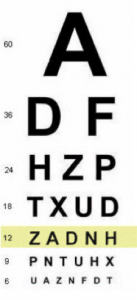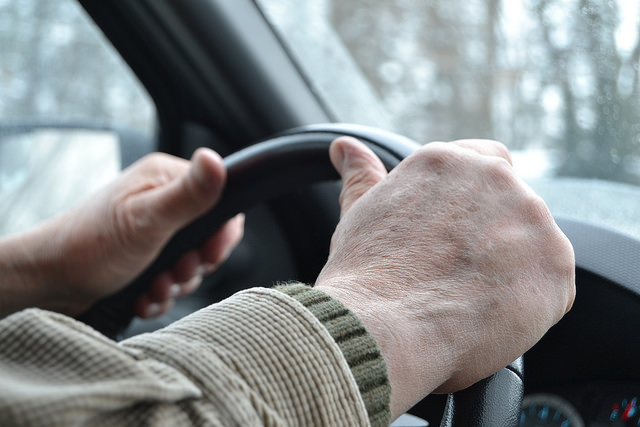I have macular degeneration – can I drive?
I often get asked this question by my patients who have age-related macular degeneration. These patients rely on driving to maintain their independence.
The answer depends on several factors. If you have an eye condition that affects your ability to see (such as macular degeneration), you should inform the Driving and Vehicle Licensing Authority (DVLA). They will send you this form: www.gov.uk/government/publications/v1-online-confidential-medical-information.
You must fill out
- details about yourself
- your General Practitioner
- the optometry or eye clinic that saw you
- details of your eye condition
- any treatment you may have received
Once they receive these details from you, the DVLA will arrange a particular test with their approved optometrist. It won’t necessarily be your regular optometrist. There, the optometrist will assess whether you are fit to drive.
If you wear glasses or contact lenses the DLVA bases the current standard for driving on your ability to read a number plate at 20 metres. Examiners use this approach in driving tests and it is a little crude.
 The minimum standard for driving, based on our eye charts used in our eye clinics is 6/12 with both eyes open. That is two lines above the normal 20/20 vision line (also known as the 6/6 line in the UK) in the illustration shown to the right.
The minimum standard for driving, based on our eye charts used in our eye clinics is 6/12 with both eyes open. That is two lines above the normal 20/20 vision line (also known as the 6/6 line in the UK) in the illustration shown to the right.
If your best-corrected vision is worse than the 6/12 line with both eyes open, then we would tell you not to drive.
If you have only one good seeing eye, we deem you monocular. If that good eye sees better than 6/12, you are legal to drive.
The issue becomes a little more complicated with macular degeneration. Macular degeneration affects the central vision. Patients can suffer from blur patches or distortion in the middle of their vision. They may be able to see quite well on the eye chart test and even see better than the 6/12 line mentioned above.
Unfortunately in these patients, this does not mean they can legally drive. The DVLA will check that you do not have a field defect in your vision that affects driving. They will send you to an approved optometrist. That optometrist will perform an automated visual field test known as a binocular Esterman visual field test. They will conduct this on you with both eyes open and will assess your visual field.
The DVLA requires patients to have a horizontal field of vision of at least 160 degrees. The extension should be 70 degrees left and right and 30 degrees above or below. There must be no defects within a radius of the central 30 degrees.
They do this to ensure that you have enough peripheral field to see objects on the road coming from the sides. And also to ensure you do not have any blind spot defects in the centre of your vision that would be deemed dangerous.
Unfortunately, some patients have defects in their central vision due to age-related macular degeneration. Patients who fail this driving visual field test despite having good vision on the eye charts.
This situation can be frustrating for patients. But the DVLA has strict criteria for drivers not to endanger themselves or others when driving.
I see similar frustrations with patients who have strokes that cause quite severe visual field loss. These patients still keep the ability to see well on our eye charts.
My advice is not to worry too much and seek the advice of your optometrist or eye doctor who can usually tell you on what to do.
You can find more information here: www.gov.uk/driving-eyesight-rules.
You can call me on 07919 895 448 and I would be happy to discuss.



nice